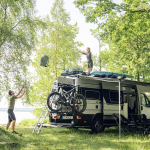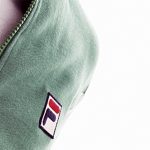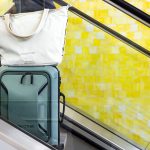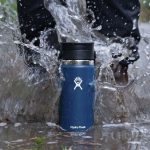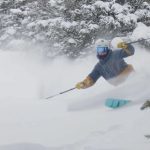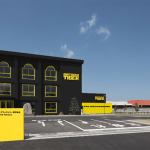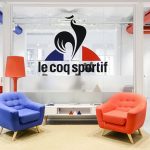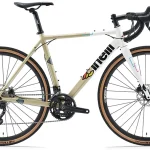“Colder temperatures and aggressive markdowns in the East
and Midwest helped slow down the declining specialty store sales in those regions. The apparel categorys strong 8% dollar gain also helped to offset equipment and accessory declines,” said Christine Martinez, market research manager for SnowSports Industries America (SIA), the not-for-profit industry trade group that represents manufacturers and distributors of snow sports products. New for this season, the SIA Retail Audit now tracks the Internet channel of
distribution.
For the August 2006 through January 2007 period, snowsport Internet sales totaled a significant $274 million. Total sales at specialty stores and via the Internet climbed to $1.6 billion for the August through January period. Due to a major retailer no longer reporting POS data to any data consolidator, the chain store data has been suspended.
Sales at specialty ski and snowboard shops were down 3% in dollars compared to last season. In dollars, that translates to $1.37 billion in sales compared to $1.41 billion in 2006. Unit sales were down from last season 3%. The SIA Retail Audit, conducted by Leisure Trends Group,
tracks and reports sales in all snow sports product categories. This is the fourth report of six that
look at sales through March 31, 2007, the end of the winter season.
APPAREL CONTINUES TO SEE GROWTH IN MULTIPLE CATEGORIES
Specialty apparel sales (including tops, bottoms, suits and snowboard) remained ahead 8% in
dollars as compared to the same August through January period last year. By the end of
January 2007, apparel sales had reached $487 million outselling equipment sales by $36
million. Last season at this time, equipment outsold apparel by $58 million.
Insulated parka sales rose 22% in dollars with sales reaching $145.6 million by the end of
January 2007. Womens insulated parkas led the category with $71.3 million in sales outselling
mens insulated parkas by $22 million (1.5 to 1 in units). At the end of January, 506,000
insulated parkas remained in specialty retail inventory, 17% more units than at the end of January 2006. Even with the increased inventory, sell-through stood at 59%, up from 58% at
the end of January 2006.
Overall dollar sales of softshell parkas jumped 26% when comparing this period to the same
period a year ago. From August through January 2007, softshell parkas earned $22.8 million in
sales. At the end of January, softshell parkas were 60% sold-through, up from 58% at the end
of last January.
In the insulated parka category, 59% of the adult units sold are womens. In softshells, the roles
are reversed, with 63% of the sales going to men. While still small, the junior softshell parka
category was up 39% in dollars.
Shell parkas declined 10% in dollars, reaching $38.0 million for the August through January
period. Mens shell parkas, 61% of all adult shell units sold, decreased 5% while womens shell
parkas fell 14% in dollars. At the end of January, shell parkas were 53% sold-through, up from
52% at the end of January 2006.
Vests (no fleece) and fleece (includes vests) continue to generate the increase in sales which
began three seasons ago. Dollar sales were up for both categories, 22% and 34%,
respectively, over last season. Fleece managed to bring in a total of $80.3 million in sales
through January 2007. Sweaters bounced back after a slow season last year with a 6% dollar
gain and $15.2 million in sales thus far this season.
Carryover top sales actually declined 37% in dollars. Through January, carryover accounted for
4% of all dollar sales, down from 6% last season.
Overall, alpine apparel tops grew 15% in dollars. Alpine bottoms, however, fell 4% in dollars,
hurt by this seasons warm weather. All alpine bottoms were 52% sold-through at the end of
January, down from 56% at the end of January 2006. Junior bottoms contributed a dollar gain
of 9%. Softshell waist pant dollars increased 14%. Apparel suits continue to decline, dropping
24% in dollars.
Snowboard apparel sales dipped 2% in dollars reaching $75.6 million in sales by the end of
January 2007. At the end of January, the category was 57% sold-through (compared to 58%
last year) with approximately 441,000 units remaining in specialty store retail.
Snowboard tops are showing promise this period over last, up 5%. Womens snowboard tops
and bottoms saw significant dollar increases over last season for the same period, 17% and 3%,
respectively. Womens snowboard tops grew from 29% of all top dollars sold to 33%. Junior
snowboard top dollars increased 17% over last season.
Snowboard apparel manufacturers have done a much better job integrating bottoms into the
fashion. Through January, snowboard tops outsold snowboard bottoms by a ratio of just 1.1 to
1. Compare that to alpine tops, which outsold alpine bottoms 3.3 to 1 in the same period.
ACCESSORY SALES EXCEED $432 MILLION
The accessories category in specialty stores dropped for the second time this season, down 4%
in dollars and reaching $432.6 million by the end of January 2007. The apparel accessories
category saw sales remain even over the same period last year, reaching a total of $252.2
million by the end of January 2007. Turtlenecks (up 3%), headwear (up 3%), neck gaiters (up
7%) and winter boots (up 6%) were the only categories to see dollar increases.
Equipment accessory sales declined 8% with considerable declines in dollar sales coming from
sunglasses (down 21%) and snowshoes (down 37%).
ALL MOUNTAIN BOARDS CONTINUE TO SHOW GROWTH
From August through January 2007, snowboard equipment sales (including snowboards, boots
and bindings) were down 15% in dollars with sales reaching a total of $149.9 million.
Snowboards (down 13% totaling $70.2 million in sales), boots (down 18% totaling $41.9 million)
and bindings (down 16% totaling $37.9 million) all experienced dollar decreases this season
over last.
All mountain boards jumped 28% in dollar sales reaching $9.8 million in sales by the end of
January 2007. All mountain boards accounted for 14% of all snowboard dollars sold (up from
10% last season at this time). Freestyle boards, the largest category, accounting for 44% of the
units and 48% of the snowboard dollars, fell 13% in dollars while freeride boards dropped 26%
in dollars. Last season at this time, freeride boards accounted for 38% of all snowboard dollars;
this season just 32%.
Carryover snowboard sales jumped 33% in dollars and increased their share of the market from
6% of the units to 9%. Even with the big increases, carryover still accounted for just 6% of the
dollars.
At the end of January, 205,000 snowboards remained in specialty retail inventory and were 55%
sold-through as compared to 62% sold-through at the end of January 2006.
Snowboard boots were 52% sold-through at the end of January, down from 60% at the end of
January 2006. Snowboard boot carryover sales more than doubled this season. Fortunately,
those increases were from a small base and carryover boots only accounted for a small 6% of
all boot dollars sold (up from 3%).
Through January, carryover bindings climbed 26% and accounted for 7% of all units sold (up
from 3%). At the end of January, all snowboard bindings were 54% sold-through, down from
64% at the end of January 2006.
CARRYOVER SALES SURGE AS RETAILERS MARK DOWN EQUIPMENT
Overall equipment sales (alpine, snowboard, Nordic, Telemark and Randonee/AT) were down
11% in dollars as compared to last season with sales totaling $451.6 million from August
through January 2007. In specialty stores, sales of alpine equipment (including skis, ski
systems, boots, bindings and poles) fell 7% in dollars this season over last.
Through January, integrated ski system sales totaled $80.0 million, an increase of 4% in dollars
when comparing this August to January period to the same period a year ago. Nearly 173,000
pairs were sold this period at retail. At the end of January, 162,000 pairs remained in inventory
and the category was 52% sold-through, down from 57% at the end of January 2006.
The fatter a system, the faster it sold. Adult midfat systems, 51% of all system dollars sold (up
from 45%) surged 19% in dollars. While still a small category, fat and super fat systems floated
up 113% in dollars. Junior ski systems surged 66% in dollars, however, bindingless junior skis
still outsold systems more than 3 to 1.
Add integrated systems to alpine skis and total alpine ski sales fell 4% in dollars and totaled
$140.5 million from August – January 2007. Bindingless alpine skis fell 13% in dollars over last
season, ending January 2007 with $60.5 million in sales. At the end of January, 250,000 alpine
skis remained in specialty retail inventory (compared to 177,000 at the end of January 2006)
and the category was just 45% sold-through as compared to 59% at the end of January 2006.
Twintip skis gained 14% in dollars, reaching $9.7 million in sales for the period of August
January 2007. At the end of January, twintip skis were 44% sold-through, compared to 55% at the end of January 2006. Twintips now account for 16% of all alpine ski dollars, up from 12%
last season at this time. The topline twintip category now includes both freestyle and allmountain
twintip skis. In previous seasons, only freestyle twintips were tracked.
Through January, carryover ski sales jumped 39% in dollars as retailers attempted to unload
excess stock. Season-to-date, carryover skis accounted for 8% of all ski dollars sold, up from
6% a season ago.
From August through January 2007, total alpine boot sales declined 8% in dollars ($112.3
million in sales). Through January, approximately 77,000 more pairs of boots were sold than
skis and systems combined. Last season at this time, 84,000 more pairs of boots were sold
than all skis.
Dollars increased for adult high performance boots (up 1%) but fell for adult sport performance
boots (down 25%), adult soft boots (down 74%), adult recreation boots (down 15%), and junior
boots (down 11%). Sales of carryover boots skyrocketed 51% in dollars.
At the end of January, 451,000 boots sat in specialty retail inventory, up from 368,000 at the
end of January 2006. At the end of this January, the alpine boot category was 50% soldthrough,
down from 57% at the end of January 2006. So far, 92,000 junior boots have been
sold compared to 85,000 junior skis and systems.
Stand-alone binding sales dropped a hefty 23% in dollars, totaling $18.3 million at the end of
January. Adult DIN 8-11 bindings fell 29% in dollars. Higher-end performance adult DIN 12-14
bindings fell 23% in dollars. Junior binding sales plunged 23% in dollars while carryover
bindings rose 40% in dollar sales. At the end of January, 220,000 bindings sat in specialty
inventory, 26% more units than at the end of January 2006.
The alpine pole category also fell 2% in dollars over last season although there was a 21% unit
jump in junior poles and an 8% dollar jump in carryover sales.
NORDIC AND TELEMARK SALES CONTINUE TO SHOW DECLINES
Nordic ski equipment sales decreased 31% in dollars this season over last. Nordic skis fell 36%
in dollars while Nordic boot dollars decreased 31%. Telemark ski equipment sales fell 32% in
dollars. While still a tiny category, randonee/AT equipment dollar sales are up 16% over last
season.
INTERNET SALES REACH $274 MILLION
New for this season, the SIA Retail Audit now tracks the Internet channel of distribution. For the
August through January period of 2007, snowsport Internet sales totaled a significant $274
million. Because this is a new tracked channel, there is no historical comparison. Of the $274
million in Internet sales sold so far this season, 58% of the dollars were from apparel, 24%
came from accessories and 17% were from equipment (compare that to brick and mortar
specialty stores where 33% of all dollars come from equipment sales).
After the holidays, Internet sales slowed down. Sales for January totaled $39 million which was
just 36% that of December. Compare that to specialty store sales where January sales were
49% of December sales.
Adult twintip skis were the best selling bindingless skis with over 6,000 units sold (29% of all ski
units) for a total of $2 million in sales. With 4,200 units sold, junior skis were the second fastest
selling bindingless ski category. Combined, the Nordic, telemark and Randonee equipment
categories account for 16% of all online equipment dollars sold, compared to just 5% in
specialty stores. Sales of alpine apparel tops totaled $135.1 million, apparel bottoms $15.2
million and snowboard apparel $8.1 million. Base layer, with $10 million in sales, accounted for
29% of all apparel accessories sold.

